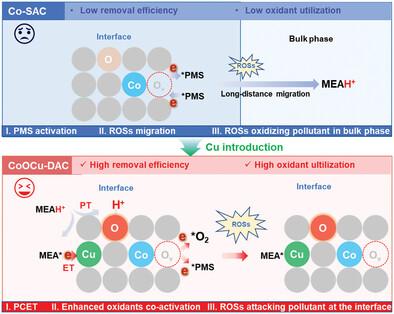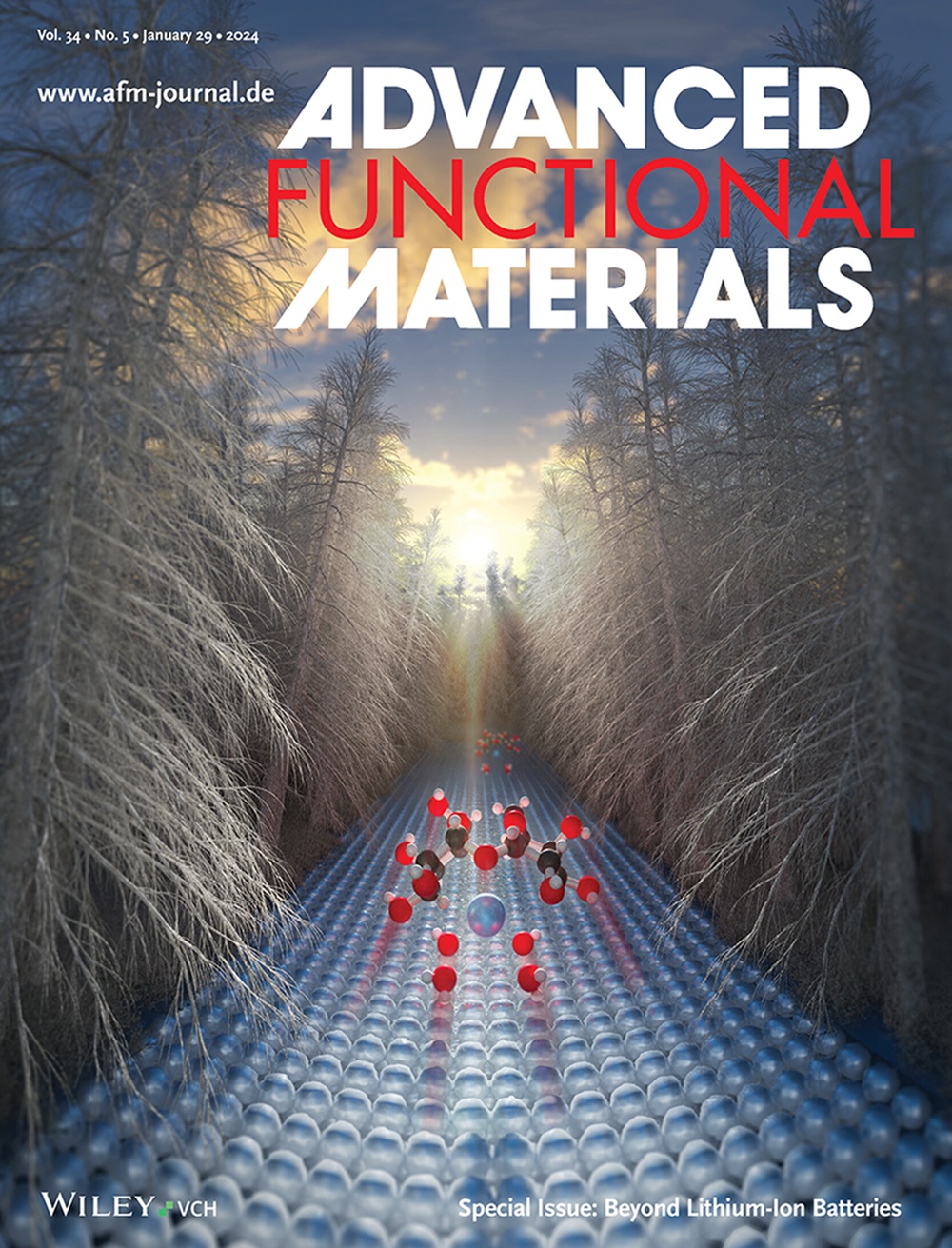O-Bridged Co-Cu Dual-Atom Catalyst Synergistically Triggers Interfacial Proton-Coupled Electron Transfer: A New Approach to Sustainable Decontamination
IF 18.5
1区 材料科学
Q1 CHEMISTRY, MULTIDISCIPLINARY
引用次数: 0
Abstract
Heteroatom-bridged dual-atom catalysts (DACs), featuring more flexible active sites and intermetallic interaction, provide an opportunity for sustainable environmental remediation. Herein, an innovative oxygen-bridged Co-Cu DAC supported on nano-alumina (CoOCu-DAC) is fabricated using a straightforward two-step process. The as-prepared catalyst significantly enhances both decontamination kinetics and peroxymonosulfate (PMS) utilization efficiency by 1–3 orders of magnitude toward monoethanolamine (MEA, pKa = 9.5) compared to Co single-atom catalyst (Co-SAC) and bulk metal catalysts, and largely outperforms previously reported systems. In-situ ATR-FTIR and theoretical investigations reveal that the secondary introduction of Cu plays multiple important roles: it activates lattice oxygen to trigger key proton transfer (PT) of MEAH+ via nucleophilic attack at the interface and subsequently favors deprotonated MEA as an efficient electron donor to accelerate electron transfer (ET) by enhancing orbital overlaps for the co-activation of O2 and PMS. Such a stepwise proton-coupled electron transfer (PCET)-enhanced catalytic pathway mediated by CoOCu-DAC is fundamentally different from common route identified in Co-SAC-involved Fenton-like system. The established binary QSAR further substantiates the universality of PCET-enhanced strategy toward versatile nitrogen-containing organic compounds. This study offers a new perspective for sustainable water decontamination and other related areas of catalysis based on rationalized design of multifunctional catalysts at atomic level.

求助全文
约1分钟内获得全文
求助全文
来源期刊

Advanced Functional Materials
工程技术-材料科学:综合
CiteScore
29.50
自引率
4.20%
发文量
2086
审稿时长
2.1 months
期刊介绍:
Firmly established as a top-tier materials science journal, Advanced Functional Materials reports breakthrough research in all aspects of materials science, including nanotechnology, chemistry, physics, and biology every week.
Advanced Functional Materials is known for its rapid and fair peer review, quality content, and high impact, making it the first choice of the international materials science community.
 求助内容:
求助内容: 应助结果提醒方式:
应助结果提醒方式:


